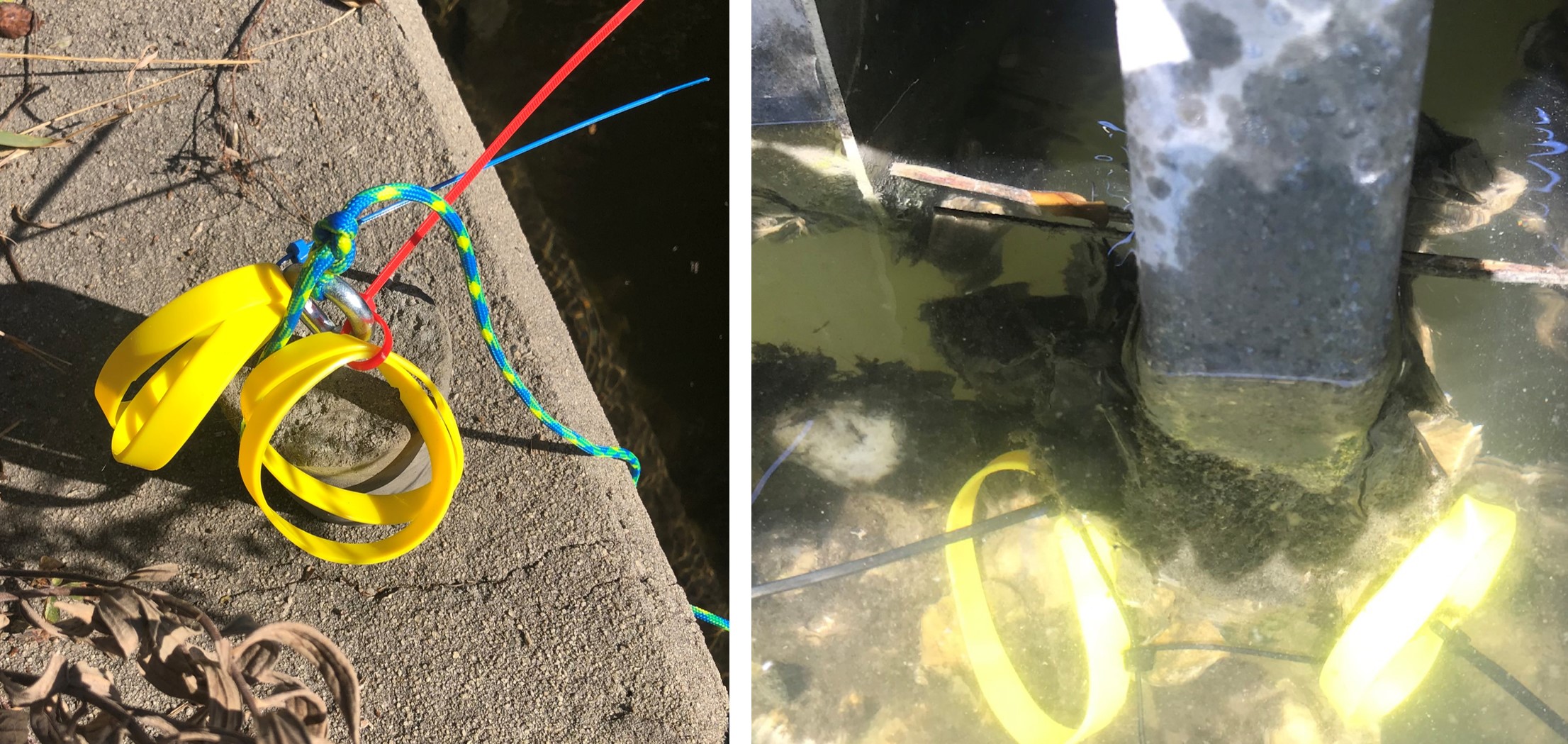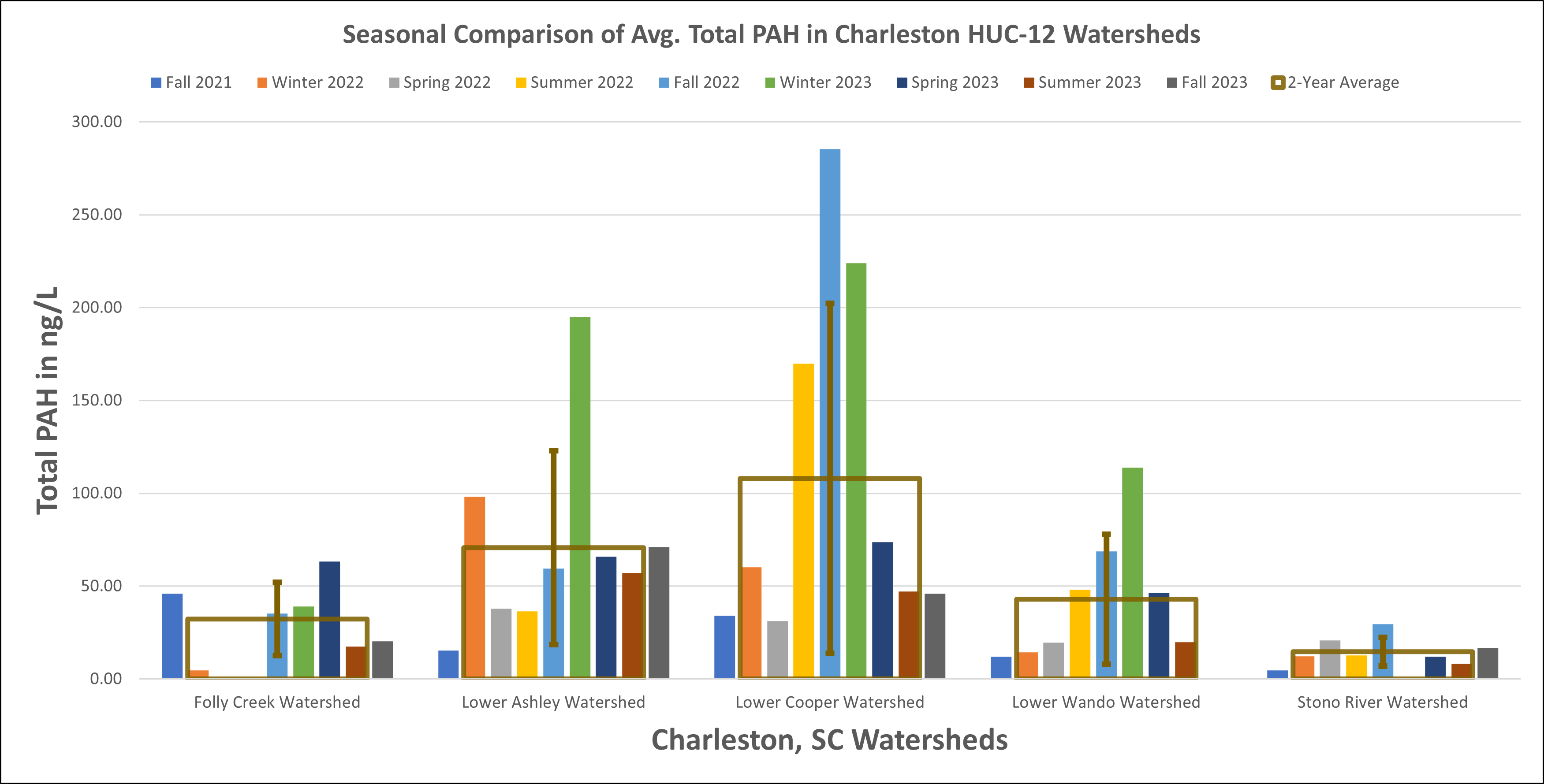NOAA’s National Centers for Coastal Ocean Science (NCCOS) has been partnering with Charleston Waterkeeper since 2020 to collect water contamination data within the waterways of Charleston, South Carolina and the surrounding area. Coastal marshes, tidal creeks, and larger waterways along the South Carolina coast are subjected to stress from port-related activity, local industries, recreational boating traffic, and increased development and population growth. These factors, coupled with increasing runoff from land as a result of major rain events and flooding, contribute to the pollution of local waters.

Charleston Waterkeeper, a nonprofit organization with a mission to protect, restore, and defend local waterways, deploys silicone bands in collaboration with NCCOS scientists in strategically placed locations to collect information in a variety of waterways. The bands absorb certain contaminants from the water over time. Organization volunteers retrieve the bands after 28 days and deliver them to NCCOS scientists for testing at the NOAA’s Hollings Marine Laboratory. NCCOS scientists extract the chemical contaminants from the bands and are able to identify and determine the amount of these chemicals in the water using the facility’s gas chromatograph mass spectrometers.
The team tests for a suite of contaminants that include compounds found in coal, oil, and gasoline (polycyclic aromatic hydrocarbons [PAH]), pesticides (pyrethroid insecticides), and have recently added per- and polyfluoroalkyl substances (more commonly referred to as PFAS, a group of persistent organic chemicals) to the list of contaminants for which they are testing.
The team is also testing these same sites throughout the year to show possible relationships between seasons and the presence of these contaminants. Recent findings from these samples indicate higher pollutant concentrations correlate with higher coliform bacteria counts and land use variables, such as greater percent of developed land and the number of discharge permits within subwatershed boundaries.
Visit the project page or Charleston Waterkeeper website for additional information about this ongoing monitoring.

This work is authorized by the Clean Water Act and Oil Pollution Act in order to monitor toxins and contaminants within waterways.
